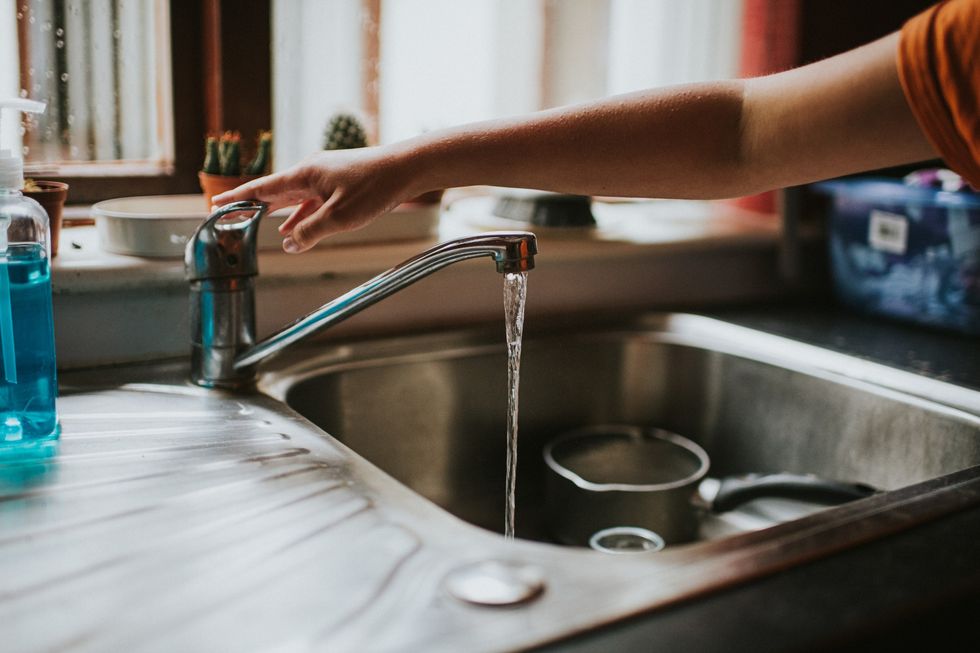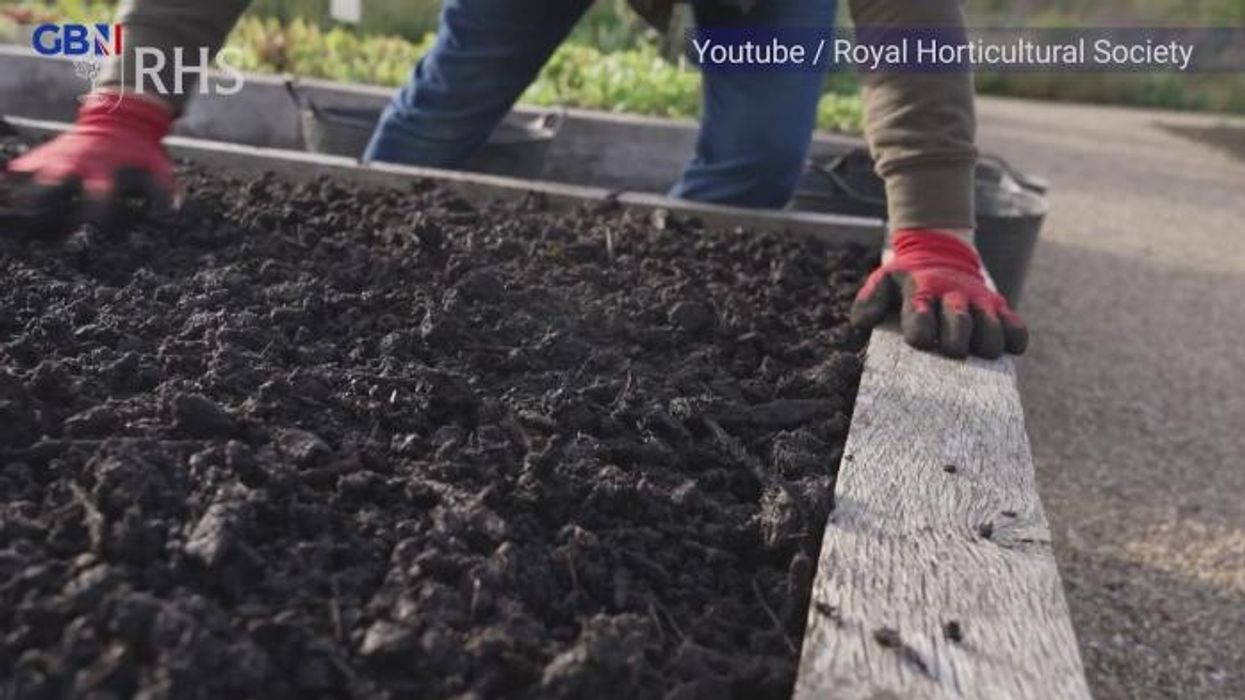How to achieve 'enviously green' grass this summer - 'From dusty brown to emerald!'

High humidity and drought are recipes for garden disaster if you don't have the right tricks up your sleeve
Don't Miss
Most Read
Britons face a frustrating paradox this summer: after praying for sun all year, we're too hot when it finally arrives. This is down to high humidity, which has been particularly prevalent this June and July.
Gardeners experience a specific problem during periods of excessive humidity. Coupled with drought conditions, this weather combo can transform vibrant lawns into parched, brown patches.
Online searches for grass greening techniques have surged by 319 per cent over the past quarter, highlighting widespread frustration with deteriorating lawn conditions during the warmer months.
Recent heatwave alerts and drought declarations across Yorkshire have prompted lawn care manufacturer Hayter to share essential guidance.
Here, Hayter's lawn specialist Chris Cooper offered his specific recommendations for achieving and maintaining "enviously green" grass despite challenging weather conditions in the UK.
He told green-thumbed Britons: "Follow these crucial dos, avoid the don'ts, and your grass will be going from dusty brown to emerald green before the summer is out."
Do water well to prepare for drought

'Do you have a hot tap that takes a while to heat up? Don't let the water go to waste'
|GETTY IMAGES
"In the peak of summer, during heatwaves, and when your grass is thoroughly scorched, you should be watering at least twice per week – or irrigating every day if you have an irrigation system.
"Just be careful not to overwater your grass; a deep watering more than twice per week risks flooding the soil.
"If you're one of the lucky ones who haven't been hit by drought restrictions yet, you need to start preparing for this. If you think of it as a 'when' rather than an 'if', your lawn will be prepared for anything.
"I have two favourite ways to prepare for drought. You can leave rain collectors in your garden, building up a natural reserve of water you can use during a drought. It's planet-friendly, no-maintenance rain collection that's great for the lawn and won’t annoy the council.
"You can also make the most of running water. Do you have a hot tap that takes a while to heat up? Don't let the water go to waste; collect it in a jug until it's warm enough to wash your hands or clean the dishes."
Don't heavily scarify
"Scarifying [removing dead thatch using a rake or scarifying machine] is amazing for making grass greener – especially lawns discoloured by moss and weeds.
"However, this task should be completed in autumn or late spring, not when the weather is as hot as it is now.
"After scarifying, lawns need plenty of moisture, cooler conditions (ideally), and less heat. Scarifying is a stressful process; the last thing a scorched lawn needs right now is more stress – that won't make your grass any greener."
LATEST DEVELOPMENTS:

Scarify your lawn in autumn or late spring – 'not when the weather is as hot as it is now'
|GETTY IMAGES
Do lightly aerate
"Lightly aerating your lawn in hot weather can do wonders to fix your dehydration problem – this is usually one of the biggest factors preventing your lawn from getting greener.
"To aerate properly, puncture the soil with a garden fork, aiming for a depth between two to six inches.
"Aerating will help improve drainage, but most importantly, it means when you water the grass, the soil will properly soak in the water and hydrate grass roots, making the soil healthier and grass greener."
Don't over-fertilise
"It's really tempting to keep dumping fertiliser on your lawn when it's looking all kinds of brown, but this could do more harm than good.
"Too much fertiliser can scorch grass and burn roots thanks to a drastically altered PH level in the soil, making the problem worse, especially in a drought.
"Think of it this way – if someone felt weak because they needed to eat a good meal to get their strength up, do you think they could manage a full roast if they were also dehydrated? Proper watering is key, followed by focused, more digestible grass feed."
Do spot fix with proper seeds and feeds
"You might find the brownest patches are looking a little thin. This means you should be applying a good UK grass seed, such as perennial ryegrass.
"Seed by spreading evenly (roughly 50 grams per square meter of damaged lawn grass) and around 20-35 grams per square meter in patches faring a little better.
"You can make sure the grass seeds properly seed into the soil by lightly raking the areas you've spread.
"To feed the grass, don't over-fertilise as discussed, but do apply a low-nitrogen summer feed; there are plenty of different kinds, but the feeds specifically marketed as 'summer' and 'low-nitrogen' are the most appropriate for this heat. Spread all over the affected areas and water well."
Don't leave heavy objects or tread on the grass
"Repeatedly walking over grass in the same spots will make it browner over time due to pressure damage – this is fairly well-known.
"What people overlook more often is garden appliances, furniture, toys – pretty much anything that is heavy enough to crush grass and is left for prolonged periods.
"A good example of this is kids' trampolines or goal posts: if they haven’t been moved in ages, maybe it's time to move them around.
"If they're used often, that's fine! Maybe just consider moving them slightly to give the crushed grass a chance to benefit from stress relief, a bit of sun and water."
Do raise your cutting height on your mower
"We often advise lowering the cutting height in the summer for a more uniform look and to help support faster grass growth in hot weather, but there is such a thing as too short – and definitely such a thing as too hot.
"You should never be mowing your grass until it has reached a minimum height of seven or eight cm, and you should never be taking off more than one-third of the total grass height, but it is worth raising your mower from the lowest cutting heights instead of setting it to the low-mid range.
"Ever-so-slightly longer grass will protect the soil underneath that gives the grass life, and stressed soil does not a green lawn make. Cutting the grass at a more appropriate height will encourage stronger roots, support growth, and keep the lawn cooler thanks to less plant tissue being removed."











